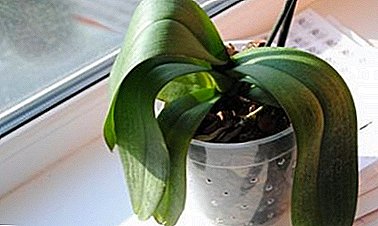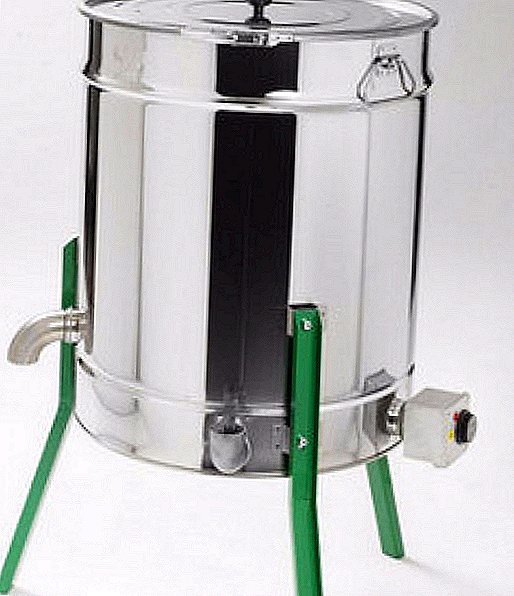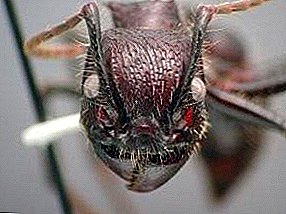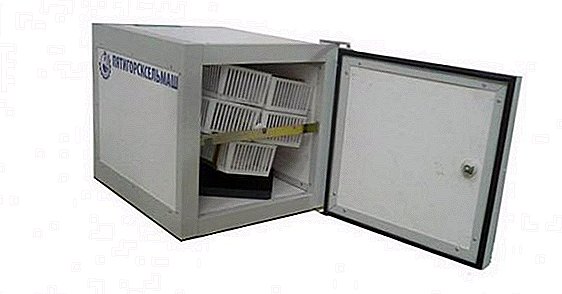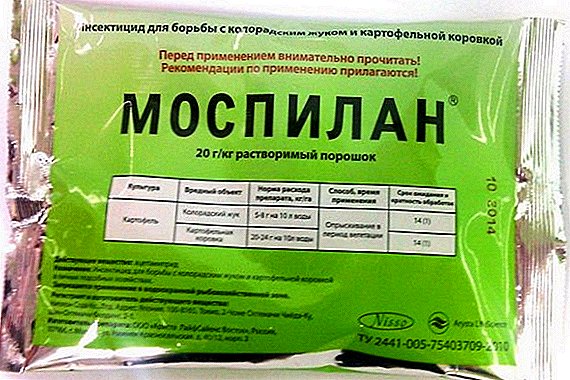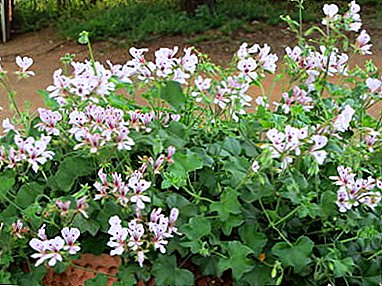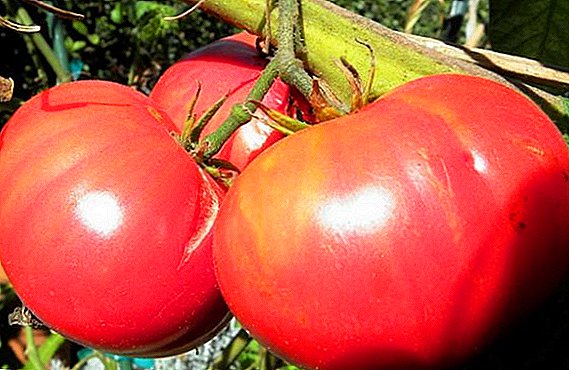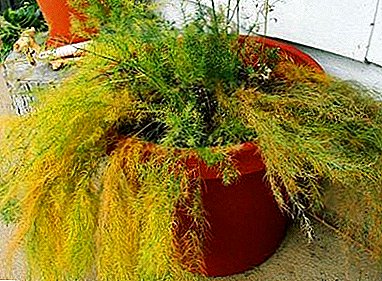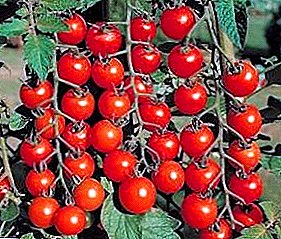
Tomatoes Red cluster, the second name "Sweet Million" - small-fruited variety, but very fruitful. These small tomatoes are ideal for whole-canning.
The variety was bred by our compatriots, selectors of Agroni LLC. Registered in the State Register of the Russian Federation for cultivation in open ground and greenhouse conditions in 2008. It is permissible to grow throughout the country, in cold regions - only in greenhouses.
In our article you will find a complete description of the variety, its characteristics, especially the cultivation.
Variety description
| Grade name | Red bunch |
| general description | Early ripe determinant variety of tomatoes for growing in greenhouses, greenhouses and open ground. |
| Originator | Russia |
| Ripening | 90-100 days |
| The form | Fruits are small, round, on a bunch |
| Colour | Red |
| Average tomato mass | 30 grams |
| Application | Universal |
| Yield varieties | 10 kg per square meter |
| Features of growing | Distance between plants - 40 cm |
| Disease resistance | Immune to late blight and powdery mildew |
 Tomato "Red Cluster" - a determinant plant, not stam. About indeterminantny grades read here.
Tomato "Red Cluster" - a determinant plant, not stam. About indeterminantny grades read here.
The bush is only 50 cm tall, very strong, after “pinching” the growth points it grows in breadth, it forms many brushes with fruits. The leaves are medium in size, dark green, wrinkled, “potato” type, without pubescence.
The inflorescence is ordinary (simple), for the first time it turns out after 6-7 leaves, then - after 1 or 2 leaves. From one inflorescence grows up to 30 small fruits in the form of a bunch. The stem of the joint is strong, the fruit does not fall. Rhizome powerful, common to non-standard bushes, grows to tens of centimeters in different directions horizontally.
According to the type of ripening, the variety is early ripe; the fruits are formed 90 to 100 days after planting. It has a high percentage of resistance to the main diseases of tomatoes (late blight, powdery mildew). Possible cultivation in open ground and greenhouses. Requires pre-growing seedlings.
Characteristics of the fruit:
- Small fruits, weighing only about 30 g, grow in clusters, each with up to 15 fruits.
- Form - rounded, low-ridge.
- The skin is thick, thin, shiny, smooth.
- Taste marked rich tomato, sweet.
- The color of immature fruits is light green with a dark spot on the stem, mature ones have a bright red color.
- Seeds average number, are evenly distributed in 3 chambers. Dry matter in the fruit is contained in a minimum amount.
You can compare the weight of fruits with other varieties in the table below:
| Grade name | Fruit weight |
| Red bunch | 30 grams |
| Doll | 250-400 grams |
| Summer resident | 55-110 grams |
| Lazy man | 300-400 grams |
| The president | 250-300 grams |
| Buyan | 100-180 grams |
| Kostroma | 85-145 grams |
| Sweet bunch | 15-20 grams |
| Black bunch | 50-70 grams |
| Stolypin | 90-120 grams |
Specifications
Fruiting occurs throughout the season with unchanged large volumes. Resistant to bad weather conditions, day and night temperatures. Uniform sprouts and fruiting were observed.
The main advantages:
- despite the small tomatoes, the yield of the variety is magnificent - up to 10 kg per 1 sq. m;
- tasty fruits;
- good storage;
- do not crack;
- disease resistance;
- unpretentiousness.
Defects not identified.
You can compare the yield of this variety with others in the table below:
| Grade name | Yield |
| Red bunch | up to 10 kg per square meter |
| Nastya | 10-12 kg per square meter |
| Bella Rosa | 5-7 kg per square meter |
| Banana red | 3 kg from a bush |
| Gulliver | 7 kg from a bush |
| Lady shedi | 7.5 kg per square meter |
| Pink Lady | 25 kg per square meter |
| Honey heart | 8.5 kg from a bush |
| Fat jack | 5-6 kg from a bush |
| Broody | 10-11 kg per square meter |
 We bring to your attention articles about high-yielding and disease-resistant varieties of tomato.
We bring to your attention articles about high-yielding and disease-resistant varieties of tomato.And also about tomatoes that are resistant to late blight and about effective methods of protection against this disease.
Tomatoes are small and tasty, are "salad", can be used fresh, in the preparation of salads, sandwiches. In hot dishes do not lose the taste. Ideal for whole canning - do not crack. For the production of tomato paste and juice is used successfully.
A photo
Tomatoes "Red Bunch" photo, see below:


Features of growing
Cucumbers, cabbage, onions, and legumes can be precursors of tomatoes at the site. Planting on seedlings begins in late February - early March. Seeds are disinfected. Planting depth - 2 cm, distance between sprouts - 2 cm.
Freshly planted seedlings must be covered with polyethylene to form the necessary moisture or be planted in special mini-greenhouses. This will speed up and improve seedlings. You can use growth stimulants. After sprouting polyethylene is required to be removed.
Picks are carried out in the presence of 2 well-developed leaflets. Containers made of paper or peat are suitable for picking; when transplanting to a permanent place, it will be possible to move the wells to the wells without traumatizing the plants.
With the appearance of 5 sheets and with dimensions of about 25 cm, it is possible to land in a greenhouse, in open ground - a week later. In the greenhouse, choose a good place for this variety, given its size. Rassad must have enough light and air. However, the direct rays of the sun can destroy the plant, need partial shade.
The soil for tomatoes must be saturated with air and with an increased level of acidity. How to prepare the soil in the greenhouse, read here.The distance between plants should be about 40 cm. Top-dressing with mineral fertilizers several times before the formation of fruits.
As fertilizers, you can also use: organics, boric acid, iodine, yeast, ammonia and hydrogen peroxide.
Stephening is required every 2 weeks. Garter need brushes with fruits. Vertical or horizontal lanes will do. Watering standard, if necessary mulching. Harvesting from June to September.
Diseases and pests
There is immunity to late blight and powdery mildew. Prophylactic spraying against diseases and pests with drugs intended for this purpose - fungicides and insecticides.
 On our site you will find everything about such tomato diseases in greenhouses as alternarioz, fusarium, verticillis.
On our site you will find everything about such tomato diseases in greenhouses as alternarioz, fusarium, verticillis.As well as useful information about disease resistant varieties and effective methods of dealing with the most common ones.
Tomato "Red Bunch" will delight you with yield and taste.
Read also useful and interesting articles on how to grow tomatoes in the greenhouse all year round, how to get a decent crop in the open field, what are the subtleties of early varieties of agricultural technology.
In the table below you will find links to tomato varieties with different ripening periods:
| Early maturity | Mid-season | Middle late |
| White filling | Ilya Muromets | Black truffle |
| Alenka | Wonder of the world | Timofey F1 |
| Debut | Biya rose | Ivanovich F1 |
| Bony m | Bendrick cream | Pullet |
| Room surprise | Perseus | Russian soul |
| Annie F1 | Yellow giant | Giant red |
| Solerosso F1 | Blizzard | New Transnistria |


